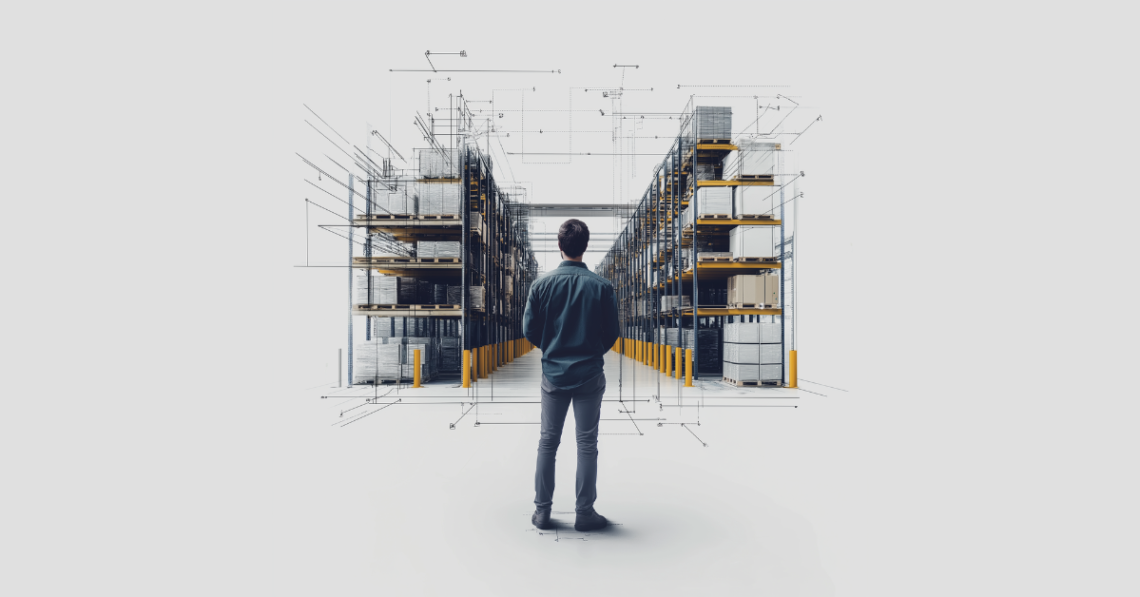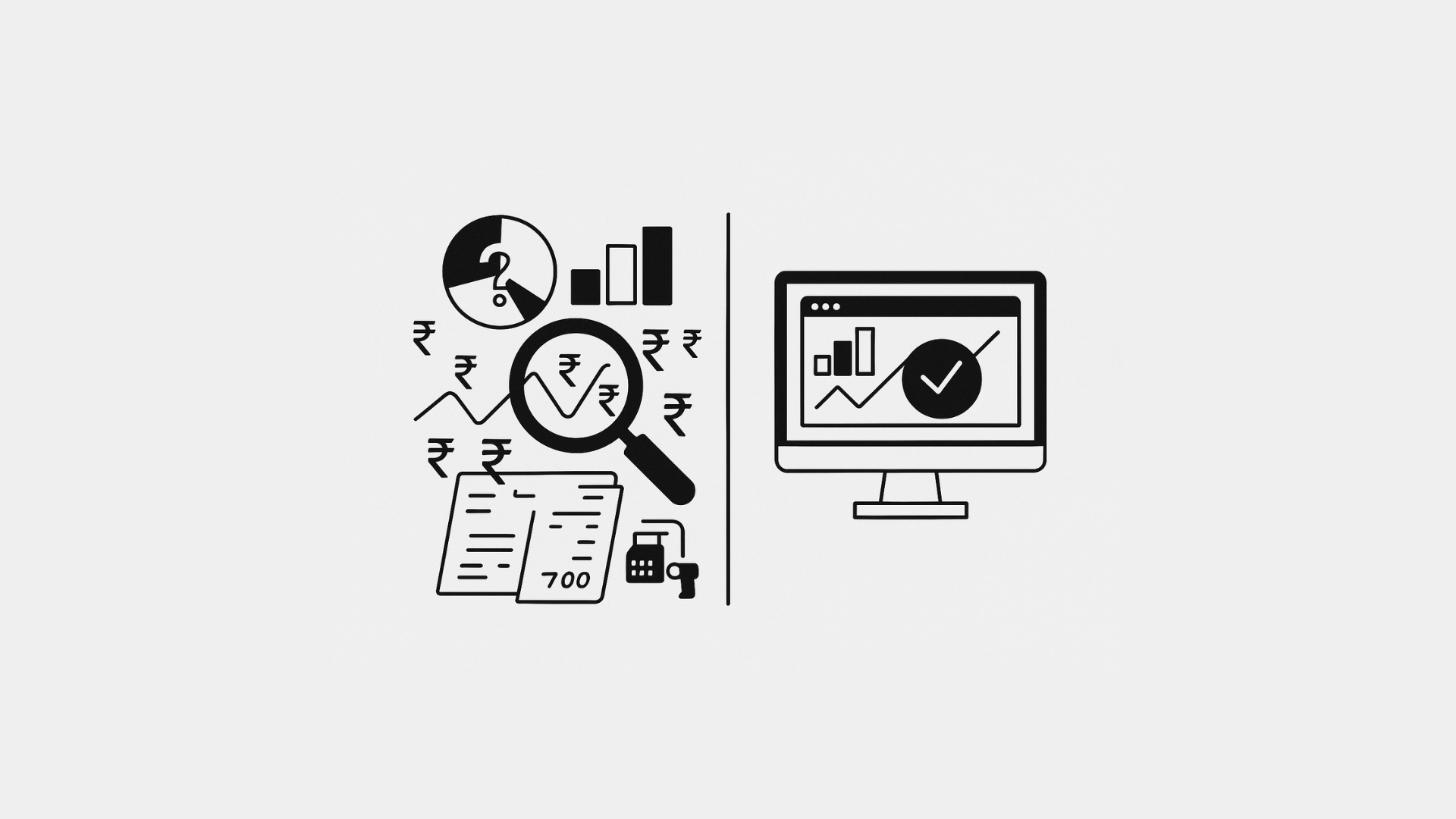Warehouse layout design is essential for making the best use of space, improving how work gets done, and keeping workers safe. A good layout helps materials, equipment, and people move around easily without wasting time or effort. Here are some of the best ideas for designing warehouse layouts:
1. U-Shaped Layout
In this layout, the areas for loading and receiving are placed on either side of the warehouse entrance. The storage and processing areas are in the middle.
Benefits
- Goods can move around more easily
- Less crossing of paths between incoming and outgoing goods
- Work flows better, which means less time spent moving around
2. L-Shaped Layout
This design puts the receiving and dispatching areas at two adjacent corners of the warehouse. The rest of the space is used for storage.
Benefits
- Works well for warehouses that have different amounts of activity in receiving and shipping areas
- Keeps the movement of goods separate, which reduces crowding
3. I-Shaped Layout
In this layout, goods move in a straight line from one end (receiving) to the other (shipping). The storage area is in the middle.
Benefits
- Good for operations that handle a lot of goods quickly
- Reduces the distance that frequently handled goods need to travel
- Makes it easier to keep track of goods
4. Cross-Docking Layout
This is a special layout where goods are received, sorted, and then immediately sent out without being stored for a long time.
Benefits
- Reduces storage costs and the time spent handling goods
- Keeps less inventory on hand
- Good for operations that move goods quickly or need items just when they’re needed
5. Modular Layout
The warehouse is divided into different areas (like receiving, storage, packing, etc.) based on sections that can be easily changed as needs change.
Benefits
– Very flexible, allowing changes as inventory needs shift
– Supports growth in expanding operations
6. Dynamic Storage Systems
Uses storage systems like flow racks, push-back racks, or automated storage and retrieval systems (ASRS) that can change based on current needs.
Benefits
– Makes the best use of vertical space and improves picking efficiency
– Good for warehouses that handle many different types of items
– Reduces the need for people to do repetitive tasks by using automation
7. Zoning Layout
The warehouse is split into specific areas based on product types, size, or how often items are picked (for example, fast-moving, medium-moving, and slow-moving zones).
Benefits
– Reduces the time it takes to find high-demand items
– Makes work easier by placing frequently picked items closer to the picking area
– Improves inventory accuracy
8. Lean Layout
This layout is designed based on principles that aim to reduce waste. It tries to make workflows better and cut down on unnecessary activities.
Benefits
– Reduces wasted space and makes material handling more efficient
– Helps materials flow more smoothly with fewer obstacles
– Focuses on activities that add value, which improves productivity
9. Vertical Utilization
This design makes use of vertical space through high racks, additional floors, or vertical lifts. It’s especially helpful for small warehouses with limited floor space.
Benefits
– Increases storage capacity without making the warehouse bigger
– Allows the use of automation for storing and retrieving items from high places
– Improves storage density for items that don’t move often
10. Automation-Focused Layout
A warehouse layout designed to work well with automation systems, such as conveyors, robotic systems, or automated storage and retrieval systems.
Benefits
– Reduces human errors and makes material handling more efficient
– Good for warehouses that handle a lot of goods or where labor costs are high
– Allows for 24/7 operations with minimal human involvement
11. Grid Layout
The warehouse is arranged in a simple grid system, with aisles and storage racks forming a clean, repeatable pattern.
Benefits
– Easy to navigate and manage inventory
– Supports high-density storage
– Reduces picking errors and makes the flow of materials better
12. Slotted Layout
Items are carefully placed within the warehouse based on size, type, or how often they’re used. This ensures that each item has the right-sized space.
Benefits
– Improves picking speed and reduces travel time
– Makes the best use of space
– Reduces clutter and makes inventory management simpler
13. Circular Flow Layout
This layout puts receiving and dispatch areas at opposite ends, creating a circular flow of goods through the storage, picking, and packing zones.
Benefits
– Reduces bottlenecks and improves traffic flow
– Reduces the crossing of paths between workers, which improves safety
– Works well for larger operations with high inventory turnover
14. 5S Warehouse Layout
A layout designed using the 5S method (Sort, Set in order, Shine, Standardize, and Sustain) to organize the warehouse space.
Benefits
– Improves workplace organization and cleanliness
– Increases productivity by reducing wasted time looking for tools or items
– Creates a safer working environment
15. Hybrid Layout
Combines elements of various layout designs based on specific operational needs. For example, a U-shaped receiving and dispatch area combined with a modular storage system.
Benefits
– Highly adaptable to changing business requirements
– Allows for customization depending on product types, order volume, or variety of items
– Can accommodate both bulk storage and fast-pick areas
Best Practices for Warehouse Layout Design
When designing a warehouse layout, it’s important to follow some best practices to ensure the design works well for your specific needs. Here are some key things to consider:
Conduct a Space Utilization Study
Before deciding on a final layout, it’s crucial to study how the space is currently being used and where there might be room for improvement. This research can assist in determining whether spaces are being overused or underutilized and can offer guidance on how to maximize the amount of space that is available.
Prioritize Safety
Safety should always be a top priority in warehouse design. To reduce the danger of accidents, this entails establishing clear pathways for the movement of personnel and equipment. It also entails establishing designated spaces for the handling of hazardous goods. In addition to being safer for employees, a safe warehouse can increase output by lowering accidents and downtime.
Incorporate Flexibility
When planning your warehouse layout, it’s important to think about future growth. Try to create a layout that can be easily adjusted as your operations get bigger or change. This might mean using movable shelving units or leaving some open space for future expansion.
Use Technology
Implementing warehouse management systems (WMS) and automated tools can greatly improve how your warehouse operates. These technologies can assist with space optimization, inventory management, and real-time data collection. Using this data, well-informed decisions on how to enhance the design and functionality of the warehouse may be made.
Lean on Data
Use historical data about how quickly inventory moves, how long it takes to pick items, and which products are in high demand to inform your layout design. This data can help you make decisions about where to place certain items or how to organize your picking routes for maximum efficiency.
Choosing the Right Layout for Your Warehouse
Each of these layout designs has its own strengths, and the best choice depends on the specific nature of your warehouse operations, the types of products you handle, and how quickly you need to move goods through your warehouse.
For example, if you handle a wide variety of products with different storage needs, a modular layout might work best. If you have a high volume of goods moving through your warehouse quickly, a cross-docking or I-shaped layout could be more suitable.
If you’re dealing with a small space, focusing on vertical utilization could help you make the most of the available area. For warehouses with a lot of automation, an automation-focused layout would be the most efficient choice.
It’s also worth noting that many warehouses use a combination of these layouts to address different needs in different areas of the facility. For instance, you might use a U-shaped layout for your overall flow, but implement zoning within your storage areas.
The Impact of a Well-Designed Warehouse Layout
A well-designed warehouse layout can have a significant positive impact on your operations. It can:
- Reduce costs by minimizing the distance workers and equipment need to travel
- Improve productivity by making it easier and faster to find and move items
- Enhance safety by reducing congestion and creating clear pathways
- Increase storage capacity by making better use of available space
- Improve inventory accuracy by creating a more organized system
- Allow for easier scaling as your business grows
- Reduce errors in picking and packing
- Improve overall customer satisfaction by enabling faster and more accurate order fulfillment
Conclusion
Designing an effective warehouse layout is a complex task that requires careful consideration of many factors. It’s not just about maximizing space, but also about creating an environment that supports efficient operations, ensures worker safety, and can adapt to changing business needs.
By understanding the various layout options available and the best practices for implementing them, warehouse managers can create a space that not only meets current needs but is also prepared for future challenges and opportunities.
Remember, the best warehouse layout is one that is tailored to your specific needs. It ought to consider the kinds of goods you deal with, your present operating needs, and your expansion goals. As your company grows, you can make sure that your warehouse keeps running as efficiently as possible by reviewing and adjusting its structure on a regular basis.
Whether you choose a U-shaped layout for its efficient flow, a cross-docking layout for rapid turnover, or a hybrid approach that combines multiple strategies, the key is to create a layout that supports your business goals and helps your team work as effectively as possible.








